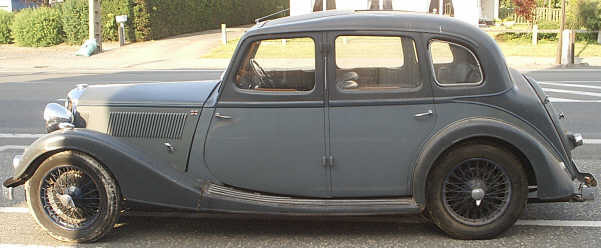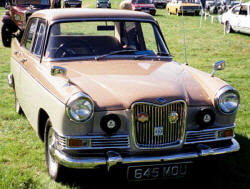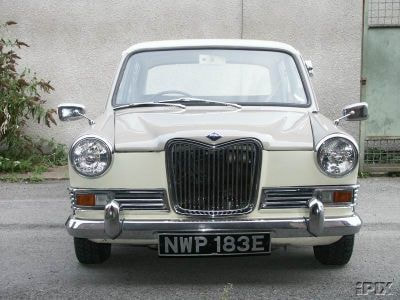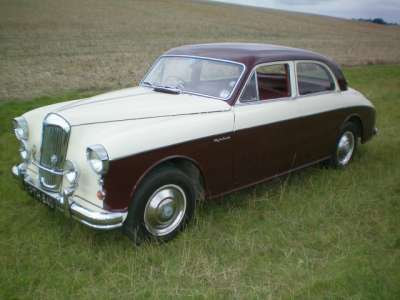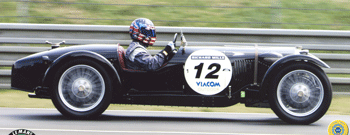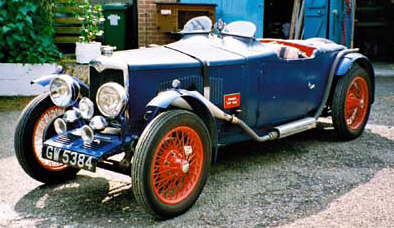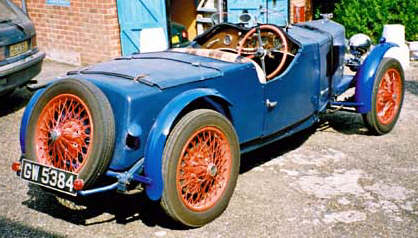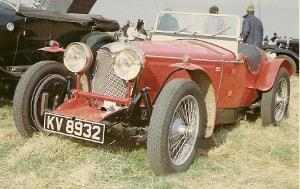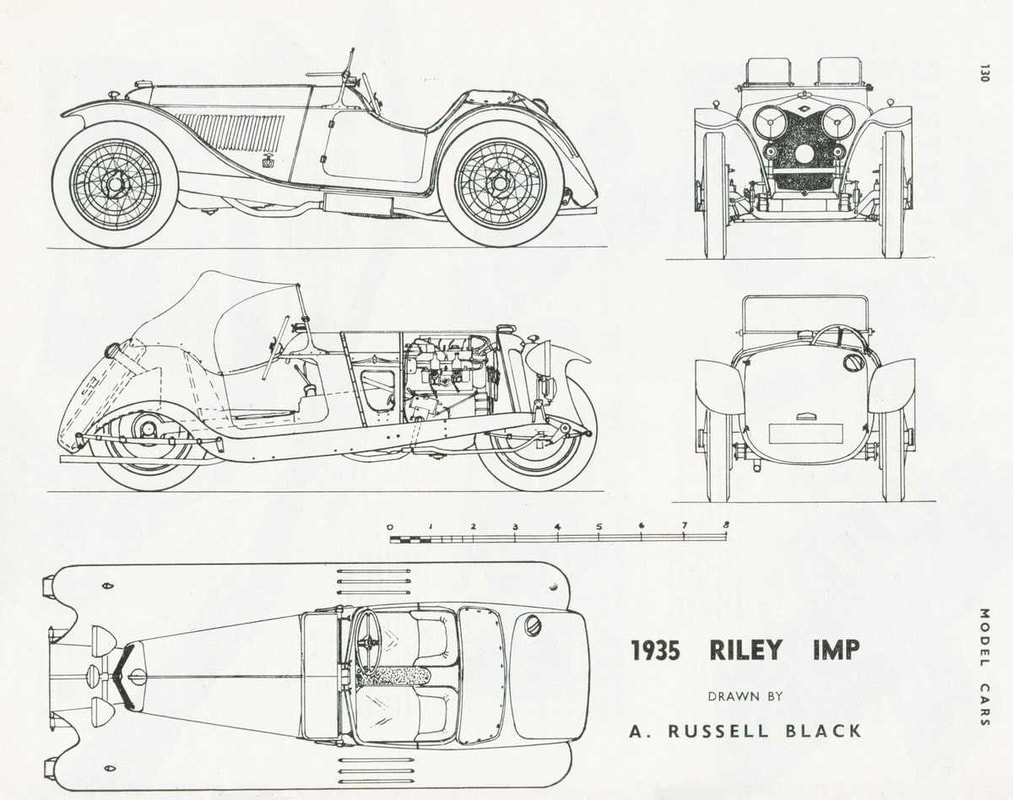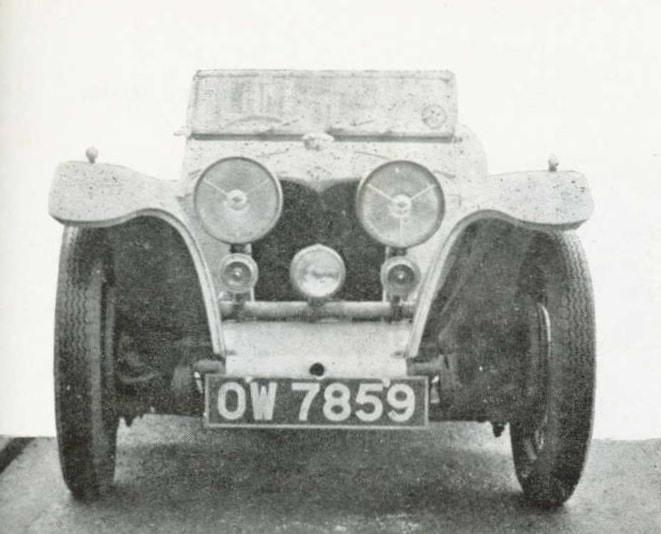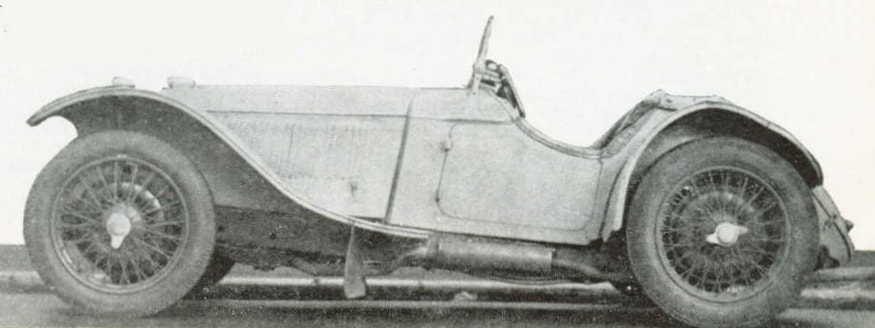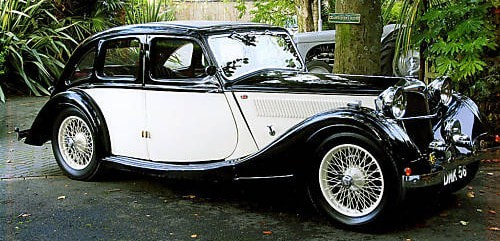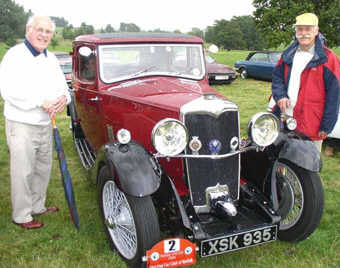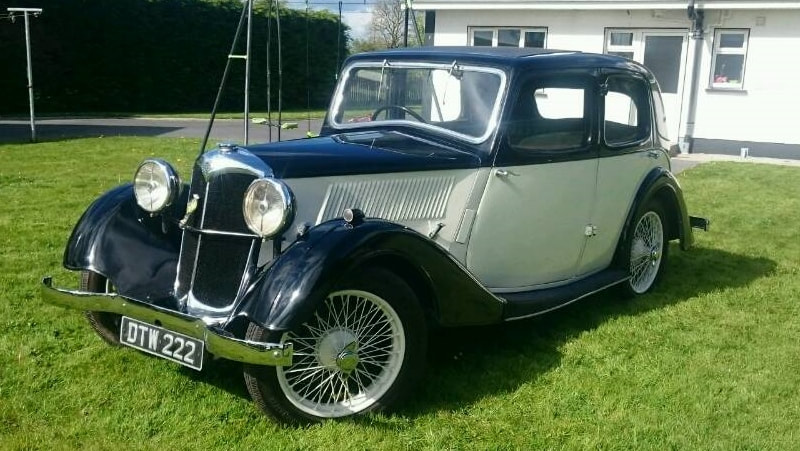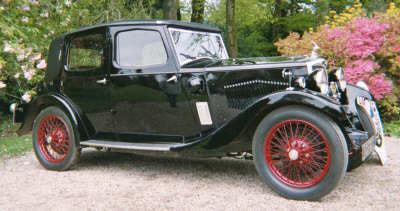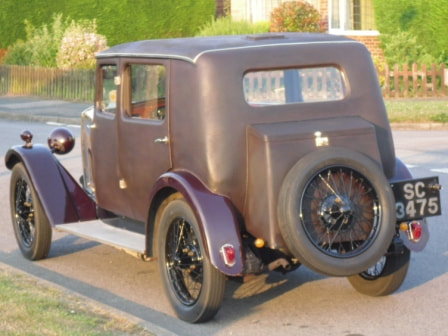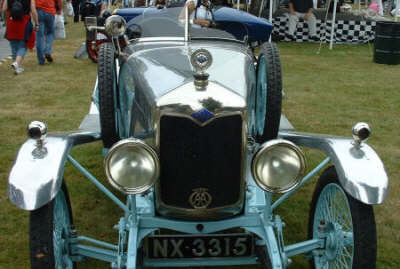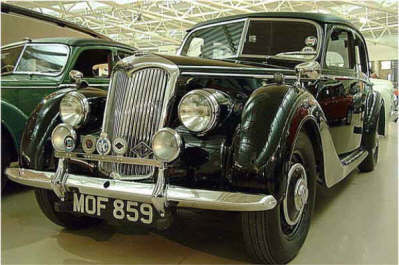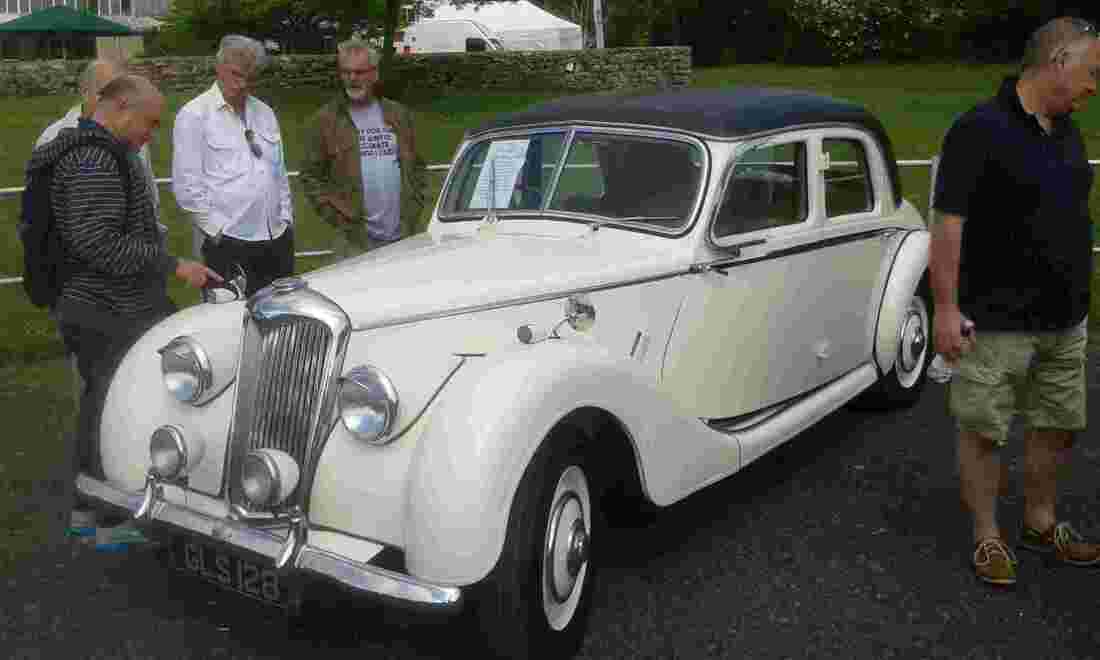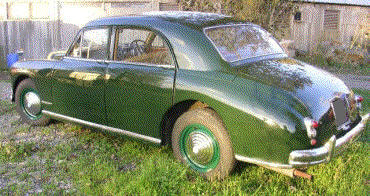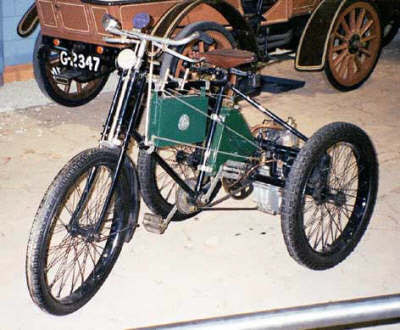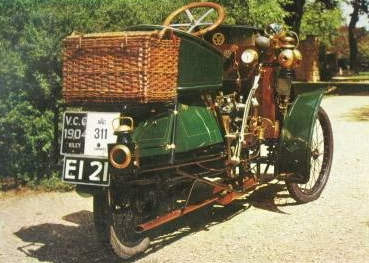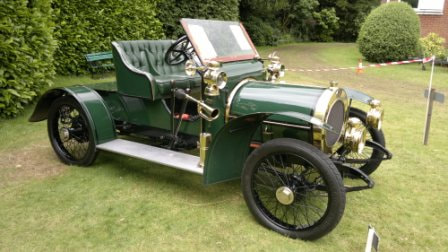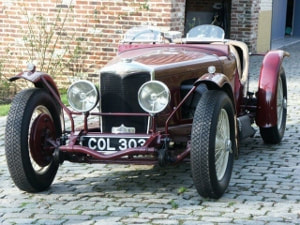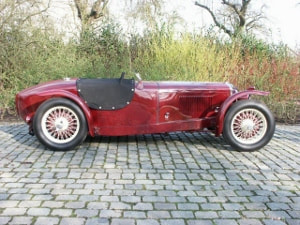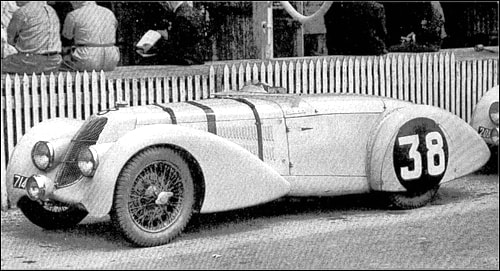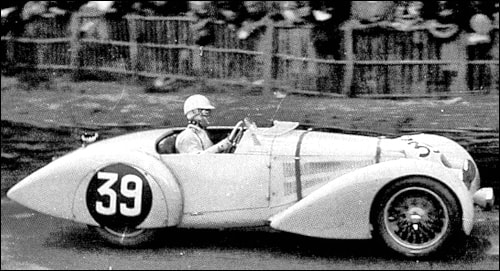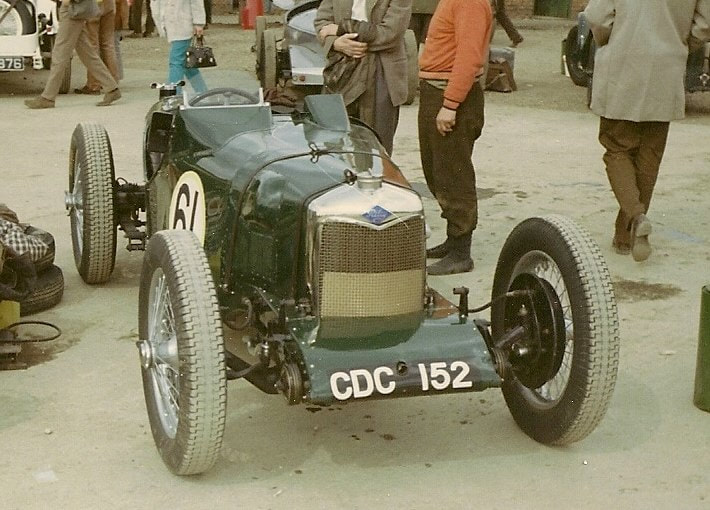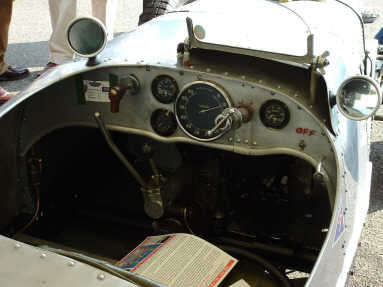Photographs of cars I have seen or been sent by owners.
The first pictures are my 1932 Monaco from the 1960's which started my interest in the marque.
Pictures as it was then and as it is now, the new pictures provided by the 2017 owner.
Below - a selection of pictures in roughly alphabetical order.
Starting below with Adelphi.
Starting below with Adelphi.
Below - Autovia.
Below - a mixture of BMC models.
Below - Brooklands.
The Riley 9 Brooklands as described in "Collins Gem Guide" to "Sports Cars" published 1986 (therefore not sure of accuracy):-
This model became the epitome of the British sports car. It had a low-slung, rakish appearance with flared front wings. The first few cars were actually assembled at Brooklands by the firm Thomson & Taylor, but later on, Riley took over production themselves. The engine, which caused a sensation when it appeared, remained the basis of Riley models until 1957. Development work was undertaken by Parry-Thomas, the famous Welsh driver engineer. He was killed in 1927 while attempting the Land Speed Record, and subsequently Reid Railton took over.
Country of origin: Great Britain. Date: 1927, Engine: Straight four; pushrod ohv; twin Solex carburettors; 50bhp at 5,000rpm, Gears: four-speed manual, Capacity: 1,089cc, Bore & Stroke: 60.3 x 95.2mm, Maximum Speed: 130km/h (80mph),
Chassis: Pressed steel side members, underslung at rear, Front and rear suspension comprising of semi-elliptic leaf springs, friction dampers
Dimensions: Wheelbase 244cm (96in). Track 121 cm (45.5in), Tyres: 11 x 68.6cm, Brakes: four-wheel drum.
The Riley 9 Brooklands as described in "Collins Gem Guide" to "Sports Cars" published 1986 (therefore not sure of accuracy):-
This model became the epitome of the British sports car. It had a low-slung, rakish appearance with flared front wings. The first few cars were actually assembled at Brooklands by the firm Thomson & Taylor, but later on, Riley took over production themselves. The engine, which caused a sensation when it appeared, remained the basis of Riley models until 1957. Development work was undertaken by Parry-Thomas, the famous Welsh driver engineer. He was killed in 1927 while attempting the Land Speed Record, and subsequently Reid Railton took over.
Country of origin: Great Britain. Date: 1927, Engine: Straight four; pushrod ohv; twin Solex carburettors; 50bhp at 5,000rpm, Gears: four-speed manual, Capacity: 1,089cc, Bore & Stroke: 60.3 x 95.2mm, Maximum Speed: 130km/h (80mph),
Chassis: Pressed steel side members, underslung at rear, Front and rear suspension comprising of semi-elliptic leaf springs, friction dampers
Dimensions: Wheelbase 244cm (96in). Track 121 cm (45.5in), Tyres: 11 x 68.6cm, Brakes: four-wheel drum.
Below - An article from April 1952 "Model maker" magazine about the above Brooklands cars with pictures of GP17.
PROTOTYPE PARADE No.36, THE BROOKLANDS RILEY, DESCRIBED BY G.H.DEASON ("Model Maker" volume 2 No.17).
Some of the detail in this article is not entirely correct, particularly the reference to the car GP17 once being owned by Whitney Straight, which it was not. The present owner of the Whitney Straight car registration plate GJ18 has well documented proof of this, so I am happy to put the record straight.
PROTOTYPE PARADE No.36, THE BROOKLANDS RILEY, DESCRIBED BY G.H.DEASON ("Model Maker" volume 2 No.17).
Some of the detail in this article is not entirely correct, particularly the reference to the car GP17 once being owned by Whitney Straight, which it was not. The present owner of the Whitney Straight car registration plate GJ18 has well documented proof of this, so I am happy to put the record straight.
Below - A scale model of a Brooklands on show at the https://www.cotswoldmotoringmuseum.co.uk/ at Bourton on the Water and a picture of the young 10 year old driver Peter Maclure. Much more information on this miniature car can be found here - Maclure baby Riley .
Below - Falcon.
Below - Forecar.
Below - Gamecock.
Below - Imp.
First seen at the 1933 October motor show in what today may be described as a concept car, the first prototype was registered in March 1934.
About 115 were produced over a period of 18 months although precise figures will never be known due to the companies records being destroyed in bombing raids on Coventry during WWII.
A 2008 book "The Riley Imp", Histories and Profiles by John Gathercole gives an in depth history of many of the cars and all things Imp.
The Riley Imp as described in "Collins Gem Guide" to "Sports Cars" published 1986 (therefore not sure of accuracy):-
The final variant of the original Riley Nine, the Imp was a very neat and pretty car with rounded tail and flared wings. These racy styling characteristics were belied by its performance which did not quite live up to its appearance. It was popular for rallying but lacked the power for racing.
Country of origin: Great Britain, Date: 1935
Engine: Straight four; pushrod ohv; twin SU carburettors; 41bhp at 5,000rpm, Gears: four-speed manual; optional "preselectagear" transmission
Capacity: 1,089cc, Bore & Stroke: 60.3 x 95.2mm, Maximum Speed: 115km/h (70mph),
Chassis: Box section side members with cross-bracing, underslung at rear. Front and rear suspension by semi-elliptic leaf springs, friction dampers
Dimensions: Wheelbase 230cm (90.5in). Track 121 cm (47.5in), Brakes: four-wheel drum, Body: two-seater; fold-down windscreen.
First seen at the 1933 October motor show in what today may be described as a concept car, the first prototype was registered in March 1934.
About 115 were produced over a period of 18 months although precise figures will never be known due to the companies records being destroyed in bombing raids on Coventry during WWII.
A 2008 book "The Riley Imp", Histories and Profiles by John Gathercole gives an in depth history of many of the cars and all things Imp.
The Riley Imp as described in "Collins Gem Guide" to "Sports Cars" published 1986 (therefore not sure of accuracy):-
The final variant of the original Riley Nine, the Imp was a very neat and pretty car with rounded tail and flared wings. These racy styling characteristics were belied by its performance which did not quite live up to its appearance. It was popular for rallying but lacked the power for racing.
Country of origin: Great Britain, Date: 1935
Engine: Straight four; pushrod ohv; twin SU carburettors; 41bhp at 5,000rpm, Gears: four-speed manual; optional "preselectagear" transmission
Capacity: 1,089cc, Bore & Stroke: 60.3 x 95.2mm, Maximum Speed: 115km/h (70mph),
Chassis: Box section side members with cross-bracing, underslung at rear. Front and rear suspension by semi-elliptic leaf springs, friction dampers
Dimensions: Wheelbase 230cm (90.5in). Track 121 cm (47.5in), Brakes: four-wheel drum, Body: two-seater; fold-down windscreen.
Below, another Prototype Parade, this time from "Model Cars" June 1964, and above pictures of the car.
All of the Prototype Parade articles can be found here - Prototype Parade , only 2 Riley related in the whole series.
(I will add that the other article above about the Brooklands Riley has some errors so beware of the accuracy of this one). PROTOTYPE PARADE No. 146, 1935 RILEY IMP, DESCRIBED BY A. RUSSELL BLACK ( Model cars June 1964).
All of the Prototype Parade articles can be found here - Prototype Parade , only 2 Riley related in the whole series.
(I will add that the other article above about the Brooklands Riley has some errors so beware of the accuracy of this one). PROTOTYPE PARADE No. 146, 1935 RILEY IMP, DESCRIBED BY A. RUSSELL BLACK ( Model cars June 1964).
Below - Kestrel.
From Practical Classics 1997 - (therefore not sure of accuracy):- The Riley Kestrel offered performance and handling of a high order for its day and had few competitors other than the wide range of models offered by Riley themselves. Perhaps the most outstanding feature of its 9hp, two-bearing engine is its efficient cylinder head. The combustion chambers are hemispherical and the twin camshafts in the top of the cylinder block operate the overhead valves by short pushrods. Available in single and twin carburettor (special series) form, this engine was fitted to such models as the Monaco saloon, Lynx tourer, Imp sports and the Merlin and Kestrel saloons. The last named were produced in 9hp form over 1933-'36. Kestrels made in 1933/'34 were fitted with the four-speed helical gearboxes, and later models featured Wilson four-speed pre-selector gearboxes and centrifugal clutches. Although these brought the penalty of added weight, they did make gear changes easier and virtually instantaneous. Low weight, aerodynamic bodywork and good handling characteristics made Riley outstanding performers in the 1930s, but their ambitious racing programme and big model range led to financial problems. Riley were taken over by Lord Nuffield in 1938 and sold to Morris Motors for £1 - sad end to a company respected for its innovative design, high quality and sporting successes.
From Practical Classics 1997 - (therefore not sure of accuracy):- The Riley Kestrel offered performance and handling of a high order for its day and had few competitors other than the wide range of models offered by Riley themselves. Perhaps the most outstanding feature of its 9hp, two-bearing engine is its efficient cylinder head. The combustion chambers are hemispherical and the twin camshafts in the top of the cylinder block operate the overhead valves by short pushrods. Available in single and twin carburettor (special series) form, this engine was fitted to such models as the Monaco saloon, Lynx tourer, Imp sports and the Merlin and Kestrel saloons. The last named were produced in 9hp form over 1933-'36. Kestrels made in 1933/'34 were fitted with the four-speed helical gearboxes, and later models featured Wilson four-speed pre-selector gearboxes and centrifugal clutches. Although these brought the penalty of added weight, they did make gear changes easier and virtually instantaneous. Low weight, aerodynamic bodywork and good handling characteristics made Riley outstanding performers in the 1930s, but their ambitious racing programme and big model range led to financial problems. Riley were taken over by Lord Nuffield in 1938 and sold to Morris Motors for £1 - sad end to a company respected for its innovative design, high quality and sporting successes.
Below - Lincock.
Below - Lynx. 12/4 Lynx (Photo kindly supplied by Peter Morrell).
Below - Mentone.
Below - Merlin 9 Left picture by owner Mike Mc Nerney 2016, right Glamis 2002.
Below - Monaco
Left - 1933 and Right - an early fabric covered model, picture from Charlie Clifford
Left - 1933 and Right - an early fabric covered model, picture from Charlie Clifford
Below - MPH
Below - Redwing
Below - RM series A-H
Below - Royal Riley
1899 Royal Riley registration 5DOR at the Heritage Motor Museum, Gaydon, Warwickshire.
1899 Royal Riley registration 5DOR at the Heritage Motor Museum, Gaydon, Warwickshire.
Below - Sprite (1936)
Below - Tricar
Below - V twin
Left - 1907 9HP V Twin at the Heritage Motor Centre, right - 1908 2 1/4 ltr. V-Twin, picture from Charlie Clifford.
Left - 1907 9HP V Twin at the Heritage Motor Centre, right - 1908 2 1/4 ltr. V-Twin, picture from Charlie Clifford.
Below - Winchester
14/6 On show at Goodwood September 2018
14/6 On show at Goodwood September 2018
Below - 9HP
Riley 9 h.p Mk IV (2 str.) tourer, forerunner to the Ascot which is sometimes known as a Doctors Coupe or Golfers Coupe, on show and described as a 1931 Riley 9 with 2 dicky seats at the Atwell-Wilson Motor Museum, Calne, Wiltshire.
Riley 9 h.p Mk IV (2 str.) tourer, forerunner to the Ascot which is sometimes known as a Doctors Coupe or Golfers Coupe, on show and described as a 1931 Riley 9 with 2 dicky seats at the Atwell-Wilson Motor Museum, Calne, Wiltshire.
Below - Specials
There are numerous Riley cars turned into Specials many (over 200) of which are shown on this website www.riley-prewar-special.com/
Below - 12/4 special owned by Dirk Libeert in Belgium (2007), an example of one of the many specials made from original Riley parts.
There are numerous Riley cars turned into Specials many (over 200) of which are shown on this website www.riley-prewar-special.com/
Below - 12/4 special owned by Dirk Libeert in Belgium (2007), an example of one of the many specials made from original Riley parts.
Below - L - T.T. Sprite replica, picture from Charlie Clifford and R - one of the H.A.R. Specials, picture and information from Charlie Clifford.
A beautiful light blue reproduction flanked by pictures of 2 of the original cars, three were produced for the French Riley distributors Eudel et companie, Jean Eudel and and Guy Lapchin were close personal friends, they pooled resources to create a racing team "Ecurie Eudel" which used Sprite chassis and streamlined bodies designed by George Paulin and built by the noted coachbuilder Maurice Pourtot.
Below - Dixon Riley's
Left - I am informed this is a Dixon Riley once registered as VC8303, Right - Shown at The Goodwood Revival, the sign says "1934 Riley Dixon special"
Left - I am informed this is a Dixon Riley once registered as VC8303, Right - Shown at The Goodwood Revival, the sign says "1934 Riley Dixon special"








